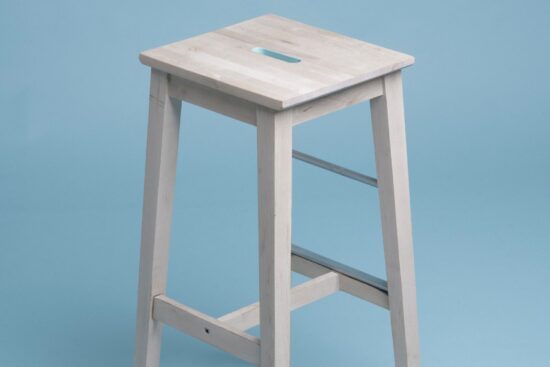
Ever feel like your desk is drowning in chargers, blinking screens, and half-used gadgets? You’re not alone—and you don’t have to stay stuck in the noise. The truth is, most of us collect devices far faster than we shed them. Phones upgrade, laptops multiply, tablets sneak into our bags “just in case,” and suddenly that sense of digital freedom feels more like digital debt.
But what’s really at stake when tech piles up? Does having more actually help—or does it quietly chip away at our attention spans, bank accounts, and sanity?
That’s where the hard-won experience of tech guru keezy.co editor benjamin comes in. Known for his hands-on approach to music creation apps and his critical eye for digital clutter, Benjamin has turned streamlining technology from a buzzword into an art form. So let’s unpack what device overload looks like on the ground—before exploring how to take back control.
What Happens When Devices Start Taking Over?
- You find yourself toggling between three phones just to check messages.
- Your workspace looks less like a home office and more like mission control.
- Cables snake across every surface—half of which you can’t identify without Googling serial numbers.
- Every week brings another charger panic or software update alert.
The funny thing about all this choice? It rarely means greater productivity. More often, it turns sharp focus into scattered fragments:
- Ever lost five minutes trying to remember which device holds that key document?
- Or wasted hours syncing files between redundant apps?
All of which is to say—tech isn’t always additive. Sometimes it fractures our ability to dive deep on anything important.
Let’s not gloss over what this means for your wallet either. Every new purchase demands accessories, protection plans, app subscriptions—the true cost runs deeper than sticker shock at checkout.
A recent look at spending habits backs this up: Americans now spend hundreds annually just maintaining their personal electronics collection—not counting upgrades. Tech guru keezy.co editor benjamin sees these hidden costs as one reason why he champions smarter curation over relentless accumulation.
Taking Stock Of Your Current Digital Arsenal With Tech Guru Keezy.co Editor Benjamin’s Approach
If all this sounds familiar (or slightly embarrassing), you’re definitely not alone—and here’s where things get actionable.
Before making any changes or chasing new minimalist trends online, sit down with everything you own. Not just what sits out on display—but also those older e-readers hiding behind bookshelves or backup drives gathering dust.
Here’s my go-to method inspired by conversations with folks who manage sprawling setups—including editors like Benjamin:
| Device Name | When Last Used? | Main Purpose/Apps Used |
|---|---|---|
| Laptop 1 (Work) | This Morning | Email; Project Management; Writing |
| Laptop 2 (Old/Backup) | Six Months Ago | Occasional File Recovery |
| Tablet | A Week Ago | E-books; Streaming Shows |
| Main Phone | An Hour Ago | Calls; Messaging; Social Media Apps |
Once everything’s laid out:
- Dive into usage patterns: Is there overlap? Do certain tasks always end up on specific devices while others gather dust?
I once realized I owned two tablets set up exactly alike—but only ever reached for one during travel months apart.
Next step: ruthlessly flag redundancies.The problem is:, tech companies market convenience so well that even experts can fall prey to doubling up without noticing it.
Now draw a bold line between essentials (the gear you touch daily) versus non-essentials (stuff used ‘just in case’). If something hasn’t been powered on since last year—it may be time to part ways.
To some extent,tech guru keezy.co editor benjamin lays out practical filters here when evaluating tools worth keeping versus ditching altogether. His advice boils down to choosing gear that genuinely supports your workflow instead of fragmenting it further.
By putting every gadget through its paces—inventorying use cases rather than hype—you’ll spot where consolidation could make life easier right away.
And if trimming back seems daunting? Remember: fewer distractions mean more headspace for creativity and growth—which might be why so many creative pros swear by regular digital declutters.
So before jumping after whatever device lands next in your shopping cart… slow down long enough to ask whether you’re investing in clarity or just collecting clutter.
Stay tuned as we dig deeper into picking favorites and building leaner systems—all backed by lessons from pros who live this stuff every day.
Creating a Minimalist Tech Strategy for the Modern Editor
If you ask any digital editor, chances are they’ve stared at their mountain of devices and files and wondered: Is there an easier way?
That’s especially true for someone like tech guru keezy.co editor benjamin, working at the intersection of music creation apps and hands-on content.
The problem is, every new app or gadget promises more efficiency—until your desk (and mind) feel more cluttered than ever.
So what does a minimalist tech approach really look like in Benjamin’s world?
It all starts by stripping back to essentials.
First up: defining core needs.
Benjamin doesn’t chase trends; he maps out which tools actually serve his workflow on Keezy.co—the ones that boost music education tech, streamline sampler app testing, or simplify article drafts.
Forget a shelf full of phones and tablets; multi-purpose devices win out here.
A solid laptop with enough grunt for both DAW editing and web content curation beats juggling three outdated gadgets.
All-in-one means less cable chaos—and fewer updates nagging for attention.
When it comes to efficient workflows, Benjamin carves time out of chaos by automating wherever possible:
- Keyboard shortcuts: These shave seconds off repetitive tasks—especially when jumping between audio files and blog post drafts.
- Pre-set templates: Whether it’s music project layouts or editorial calendars, templates keep everything tight and repeatable.
- Batched tasks: He handles social media scheduling and email sorting in one go instead of constant tab-switching.
Real-world example? Instead of getting lost searching Dropbox folders mid-project, Benjamin uses universal search features tied into cloud solutions that sync across all platforms.
Cloud storage isn’t just about backup—it powers real-time collaboration on product guides, educational videos, or quick fixes to Keezy’s UX copy right from a phone or home studio MacBook.
The upshot: with cloud-based note apps and shared drives, ideas get captured instantly—and nothing slips through the cracks come launch day.
Digital Decluttering Lessons from Tech Guru Keezy.co Editor Benjamin
Let’s face it: digital hoarding sneaks up fast—even on pros like tech guru keezy.co editor benjamin.
All those half-finished tracks? They pile up next to screenshots for tomorrow’s tutorial posts and “must-try” beta plugins stashed in Downloads since 2021.
But clutter slows creative flow. So what can be done?
Organizing files and apps becomes priority number one—not only for peace of mind but also to stay sharp when deadlines hit.
Benjamin leans hard into smart folder structures—a dedicated spot for each type of asset: demo samples over here, draft articles over there, design mockups nowhere near his main workspace unless they’re needed today.
He limits installed apps too; anything unused in a month gets archived or deleted outright.
Search bars beat endless scrolling through menus any day.
Data loss horror stories aren’t rare in music technology circles—one crash could vaporize months of work.
Benjamin avoids this fate with layered backup systems:
- Cloud backup: Everything critical autosyncs online daily (think Google Drive or iCloud).
- Local external drives: For big project files that would choke upload speeds—or sensitive assets better kept offline.
Redundancy isn’t flashy but keeps nightmares at bay when software glitches strike just before shipping an update or writing an industry analysis piece.
And it doesn’t stop there—maintenance routines matter too.
Regularly scheduled check-ins mean cleaning junk downloads weekly and reviewing privacy settings after each major OS update (because let’s be honest… permissions creep is real).
Benjamin has made these habits part routine as brushing teeth—a non-negotiable if you want consistent results under pressure as an editor juggling code reviews alongside feature interviews.
Finally—data security deserves its own spotlight in any minimalist strategy discussion because leaks happen where clutter hides secrets best.
Password managers cut down recycled logins across test accounts while two-factor authentication blocks common attacks against CMS dashboards or collaborator portals Keezy runs behind the scenes.
In short: Less mess equals less risk—and more space left for creating something original tomorrow morning instead of chasing yesterday’s problems around endless folders tonight.
All of which is to say: minimalism isn’t about sacrifice—it’s how someone like Benjamin stays nimble amid nonstop change.
Making the Transition: How Tech Guru Keezy.co Editor Benjamin Cuts Through Device Clutter
How many old phones do you have stashed in a drawer? Still keeping that tablet “just in case”? If your setup looks like a mini electronics graveyard, you’re not alone. Most of us know we should consolidate, but where do you even start?
Tech guru keezy.co editor benjamin didn’t just write about streamlining—he lived it. Imagine running music tech content for thousands and still feeling chained to half-dead gadgets every day. That was Benjamin before he set his own timeline for device consolidation.
Let’s talk timing first. It’s easy to say “I’ll do this someday,” but nothing happens until you put dates on paper. Benjamin blocked out one weekend, marked it on his calendar, and refused to let himself off the hook. That sense of urgency changes everything.
- Pick a date: Don’t trust yourself to get around to it later.
- Audit every device: What actually gets used? What’s redundant?
- Plan backups: Cloud or hard drive—don’t wing it with your memories or music projects.
Transferring data feels daunting if you haven’t done it lately. But these days, most platforms offer simple migration tools. For Keezy.co’s own gear, Benjamin swears by making two copies: cloud backup plus a local drive (because “clouds fail when storms hit”—his words).
Next comes the emotional hurdle: saying goodbye to old devices. Here’s what nobody tells you—selling can be freeing, but donating makes an impact too. Benjamin shipped his working tablets to a music school across town; seeing them spark new creativity beat getting another $30 from eBay any day.
Once you’ve cut the fat, adapting is faster than expected. No more frantic charger hunts at 1am or syncing half-broken screens just to read notes for work. Streamlined tech means streamlined thinking—and that’s how editors like Benjamin keep moving fast without melting down.
Maintaining Tech Simplicity: The Long Game According To Tech Guru Keezy.co Editor Benjamin
Now the real question: how do you keep from slipping right back into chaos? Let me lay out what works—no theory, just battle-tested habits direct from tech guru keezy.co editor benjamin.
Regular audits are non-negotiable here. Every three months (Benjamin sets reminders), he checks which apps and devices actually earn their place in his workflow. Anything gathering dust goes straight onto Craigslist—or better yet, gets donated locally again.
It sounds simple…until those shiny upgrade emails roll in promising smarter cameras and longer battery life “for creators.” You’d think someone editing tech content would crack instantly—but no, here’s where discipline wins:
The trick isn’t never upgrading—it’s asking ‘Does this fix a problem I actually have? Nine times out of ten? The answer is no.
– Less distraction = more focus on actual creative output.
– Lower costs—not just buying less gear up front, but fewer repairs over time.
– Zero-fuss travel; packing light is easier when your kit fits in one bag.
All of which is to say: simplicity isn’t anti-tech—it amplifies what matters most.
But there’s one piece people overlook—environmental impact. Every unused gadget gathering dust could power someone else’s breakthrough project (or at least avoid another landfill fill-up). That realization hit home for Benjamin after reading e-waste stats while prepping content for keezy.co; now he factors sustainability into every upgrade decision.
So what does life look like post-purge? Imagine opening your backpack and finding only what fires your next idea—instead of sifting through obsolete chargers and dead batteries wondering why you bought all this junk in the first place.
That clarity—that freedom—isn’t hype; ask anyone who has walked this path seriously (like our friend Ben) and they’ll tell you the payoff sticks long after launch-day buzz fades.
And if you’re chasing real authority in music tech—or anywhere else—the truth is brutal but refreshing: Only keep what’s essential so there’s room for mastery.
The upshot? Whether you’re cutting cords at home or tightening ops as an editor-in-chief, follow benjamin’s lead—a regular audit keeps your setup lean, mean, and genuinely useful.
All roads point back here:Less hardware = more headspace = better outcomes.
And yes—the planet thanks you too.





